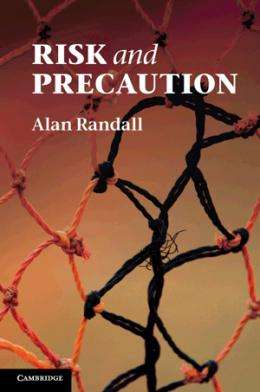The risky business of innovation: a new framework for risk management

Traditional techniques of risk management are unable to keep up with technological advancements, leaving some potentially dangerous innovations unregulated while over-regulating some that are relatively benign, according to a new book by the University of Sydney's Professor Alan Randall.
Climate change, genetic modification, synthetic organic compounds, nuclear technologies and nanotechnology are all areas in which risk management may be failing us, Professor Randall says.
"In some of these cases too much is being done, in others too little, and in most of them the wrong things are being done. We are learning that natural systems are much more complex than previously understood," he says.
He believes that traditional approaches fail to prevent potential dangers because they do not do enough to prevent threat and are too slow in diagnosing it, and are only applied after the problem is entrenched in the economy and our way of life.
"There is a growing sense among the public that technology is developing the capacity for damage on a scale so vast that it is, for that reason alone, threatening. Innovations readily become entrenched in the economy and environment, and some of them turn bad. Playing catch-up is so much harder than getting it right at the beginning.
"We sense a broad public impatience with the 'charge ahead and, if necessary, clean up the mess later' approach to risk management," Professor Randall says.
The difficulty of proving cause and effect is a major issue in mitigating risk, as it simply cannot keep up with rapid advancements in technology. A Dutch study revealed that if measures had been taken in the 1960s when it was established that asbestos could cause mesothelioma, but not yet proven, 34,000 lives could have been saved in the Netherlands alone. Although the health risk was suspected as early as 1906, asbestos was not banned in Europe until 1998.
Despite research suggesting nanoparticles can be exceptionally dangerous, nanotechnology has advanced faster than the capacity of regulators to assess its social and environmental impacts. As a result, the industry remains largely unregulated.
"The potential threats from nanotechnology are receiving increasing recognition, and there are calls for more active research with a view to systematic screening, testing and surveillance. But there is also a burgeoning industry anxious to avoid what it is likely to see as over-regulation."
The challenge, according to Professor Randall, is to avoid unnecessary risk in technological advances but still be able to reap their benefits. He proposes a framework for risk management that reduces the threat of harm without losing out on the potential profits of innovation.
"The fundamental framework I am proposing would combine elements of traditional risk management with a more precautionary approach, screening more innovations for risk, identifying real threats sooner, and allowing less-risky innovations to proceed. If we can quickly identify those cases where further testing is necessary, precaution could be less intrusive and costly while still providing substantial protection from harm."
Provided by University of Sydney















